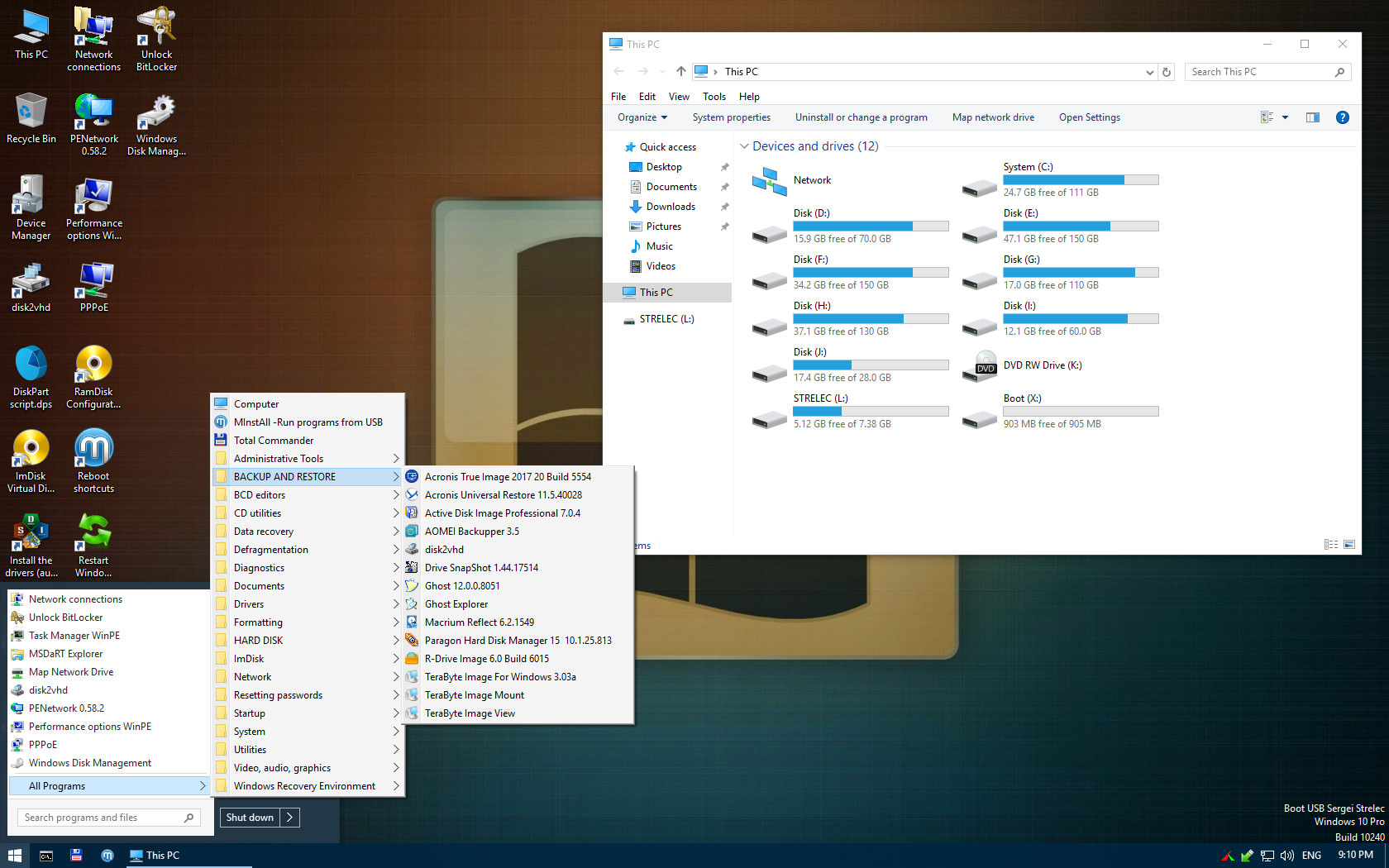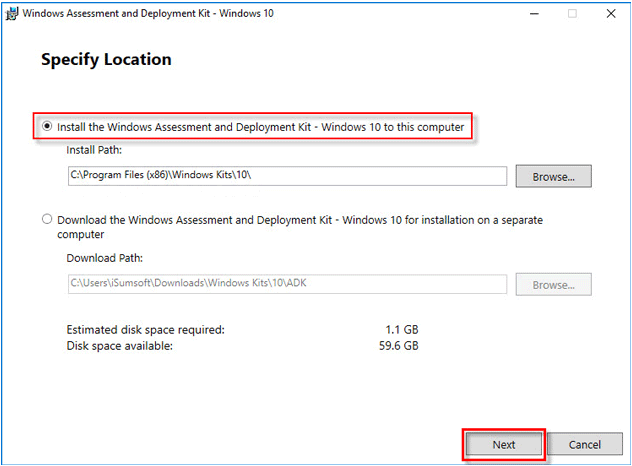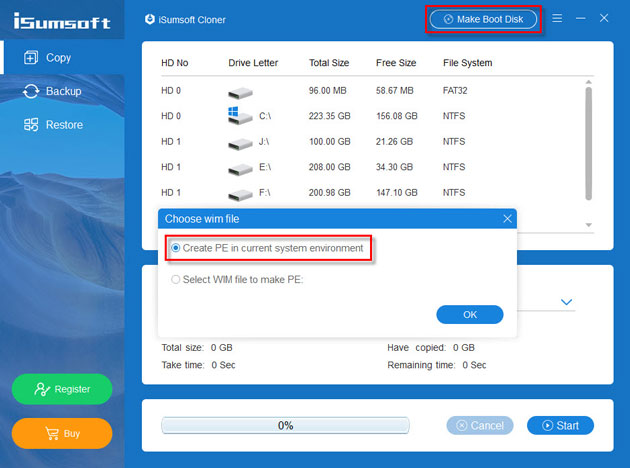
- #BOOTABLE WINDOWS PE ISO INSTALL#
- #BOOTABLE WINDOWS PE ISO ISO#
- #BOOTABLE WINDOWS PE ISO WINDOWS 8#
- #BOOTABLE WINDOWS PE ISO WINDOWS#
In more recent installs, you get three partitions (system, C:, WinRE), or even more (old winre, system, C:, winre).
#BOOTABLE WINDOWS PE ISO WINDOWS#
In earlier installs, Windows installed two partitions (system, C:). Even as Backupper does not handle every case right, it must not be fixed by deleting the partition. No you must not delete the RECOVERY partition that Windows did install. In addition you did not say whether you have an issue with aomei backupper and your sandisk? >This might play a role for the Backupper USB creation tool? <<< who knows, if not you? I advice to try. zip, keep the current ones on individual media, and re-create the others before needed). There is additional work in maintaining the stick (it is easier to keep all tools archived on disk in form of. You may loose system restore points when you boot from it. I advice against multiple tools and YUMI. You can try in BOOTICE 1.3.3.2 Parts Manage->Re-Partitioning section, it tells you the current partitioning and you can re-partition for USB HDD mode (single partition). Same can be done using BOOTICE but the program requires some thoughts to use, it is a helpful program. Sel dis n (where n is the number of the stick) You may try reinitialize the partitioning of the stick. Just ASUS GENE VI UEFI motherboard and winsows 10 64bit, haswell.

Noone else with same problem as me? It's not like I got a very unique setup. This as you know failed for me last time. So I can have backupper/MEMtool/windows 7/10 installs on it.Īt the moment I am in a situation though where I can not use backupper proper. I want to buy a higher capacity/quality usb stick and make it a swizz army with YUMI.
#BOOTABLE WINDOWS PE ISO INSTALL#
This might play a role for the Backupper USB creation tool?įor example I cannot create a proper windows 10 install on these usb sticks using windows dvdtool.

I believe this practice has later been reversed and current USB sticks being manufactured now are properly rekognized as removable media. This was a requirement at some point from windows, to allow the "windows certified" to be put on products, claiming it was for security reasons. They are unfortunately the ones that were made for windows to see them as internal harddrives, and not as removable media. This and the next optional to make it BIOS legacy-bootable, as far as concerns the boot sectors) Select disk # (where #is the usb stick number, carefully as in the other your thread)ĭet par (this shows the drive letter of the selected partition)īootsect /nt60 /mbr g: (where G: is the letter of the stick. I may suggest the following preparatory commands on the stick I formatted manually to FAT32 and it succeeded again. Backupper it converted to HDD style, NTFS format, and exited in the middle of the creation, and did not complete the creation with the usual success message. (A bootable USB stick must be HDD style, MBR, with 1 partition only. I pushed it to the limits and changed the partition style of the USB stick to FDD to see what happens. Only boot圆4.efi and bootia32.efi have different names, but are rarely an issue. The corresponding files (bootmgr, bootmgfw.efi) do have the same names for 32bit and 64bit. The distinction between 32bit and 64bit always has to be honored, they are not exchangable in WinPE, and it could be a cause of error in AOMEI. I tried: The aomei stick really contains only either UEFI or BIOS, not both. This distinction in aomei does not make sense. However in standard WinPE both boot modes are always provided, and it is just a few files and commands, when doing it manually. I noticed one strangeness when creating the bootable media: AOMEI backupper asked whether i wanted to create it based of UEFI boot mode, or create it based on legacy boot mode. Computer is a Windows 10, EFI firmware, 64 bit.

I just tried, on my virtual computer, to create an USB bootable media, and succeeded. (I know that ampe.ISO contains everything needed, but want to verify, will come back within a few hours with this).
#BOOTABLE WINDOWS PE ISO WINDOWS 8#
This method works since Windows 8 (because step c) mounts the ISO.
#BOOTABLE WINDOWS PE ISO ISO#
Say this in an administrator command prompt (where g: is the drive letter)ī) create an ISO WinPE bootable in AOMEI Backupper 3.2ĭ) copy everything from the mounted ISO to the stick. (I have to admit that I don't have a stick, my virtual computer does not allow formatting, I will create a stick somehow and analyse it).Īs a bypass I invite you to create a most bootable stick:Ī) format the stick in FAT32 from Windows And usually Windows PE boots both UEFI and BIOS firmware, just the bit depth has to match. I suggest you try to boot from file from \efi\boot\boot圆4.efi if such a file exists on the stick. I rewrite what you said:ġ) you were successful in creating a bootable USB stick, ticking WinPE.Ģ) you could not boot from the stick, because it did not boot neither in UEFI mode nor in legacy mode.


 0 kommentar(er)
0 kommentar(er)
